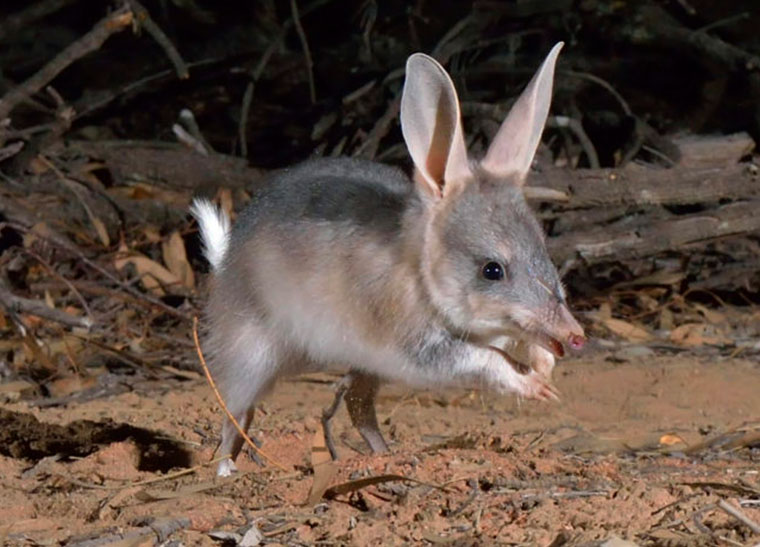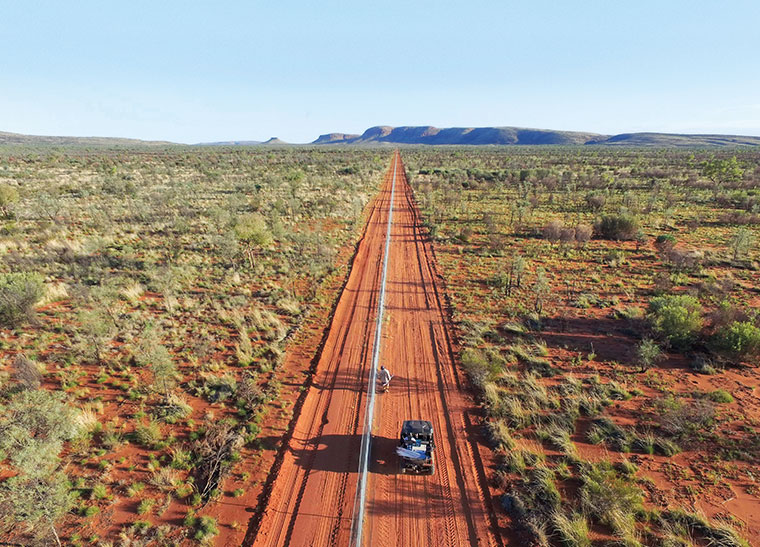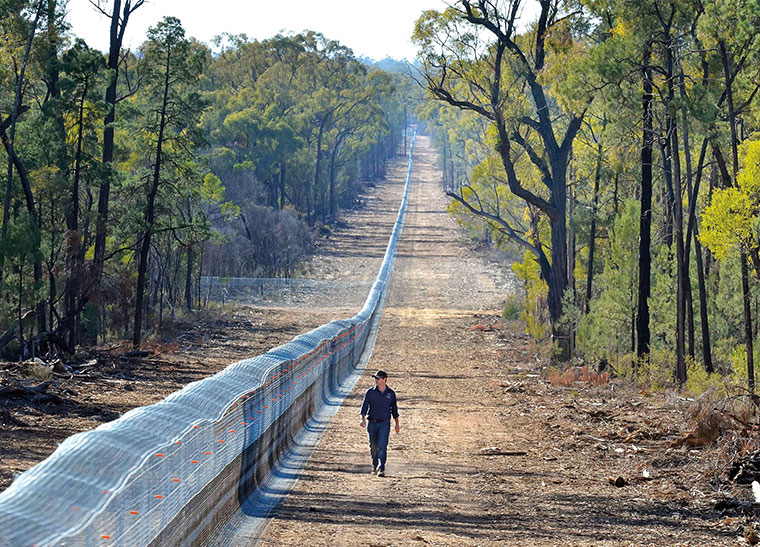2018 was another milestone year at Australian Wildlife Conservancy. Our skilled and dedicated team across Australia made exceptional progress towards our mission to provide effective conservation for all Australian animal species and their habitats. Please enjoy watching our 2018 Year in Review video by clicking on the icon above. Our work throughout the year was made possible thanks to AWC’s generous supporters.
 © Wayne Lawler/AWC
© Wayne Lawler/AWC
AWC has returned Bilbies to a New South Wales National Park, more than a century after they went extinct in that state. As part of our groundbreaking partnership with the NSW government, an initial 60 Bilbies were released within a purpose-built feral-free area. The Bilbies got straight down to business in their role as ‘ecosystem engineers,’ turning over soil, foraging and digging burrows – tunnelling up to three meters within the first 48 hours.
The return of Bilbies to the Pilliga is a significant achievement, highlighting AWC’s leadership in threatened species translocations. In 2018, AWC undertook translocations of 11 threatened mammal species to five sanctuaries – the most extensive species translocation program in Australia.
 © Wayne Lawler/AWC
© Wayne Lawler/AWC
AWC completed construction of the world’s longest feral cat-proof fence at Newhaven Wildlife Sanctuary in Central Australia. This mammoth operation involved the installation of more than 8,500 fence pickets, 400 kilometres of plain wire, 130 kilometres of mesh netting, and more than a million fence clips. The 44 kilometre fence (known as Stage 1) will create a 9,450 hectare feral predator-free area – the largest in Australia.
AWC’s expert cat trackers, including our dedicated Warlpiri Rangers, carried out months of intensive work trapping and removing feral cats from the Stage 1 area. A total of 45 feral cats have been removed to date. As you read this email, the team is working to confirm the eradication of the final cat from within Stage 1, in anticipation of translocations scheduled for later in 2019.
AWC will restore populations of at least 11 nationally threatened mammal species to Newhaven. Stage 2 of the project will increase the feral predator-free area to more than 100,000 hectares and more than double the populations of at least six nationally threatened mammals.
In the Pilliga, AWC’s ground-breaking partnership with NSW National Parks saw the construction of a 32 kilometre fence completed in a record four months, creating a feral-proof area of 5,800 hectares (including a specially constructed breeding zone for the Bilbies released in December). Further translocations into the Pilliga in 2019 will include the Brush-tailed Bettong, the Bridled Nailtail Wallaby and the Plains Mouse. In total, six locally extinct mammal species are pegged for reintroduction as part of this historic project.
 © Wayne Lawler/AWC
© Wayne Lawler/AWC
With one in three native Australian mammals threatened with extinction there is still a great deal of work to be done. Feral cats remain the single greatest threat to wildlife, killing millions of native animals every day. AWC’s strategy to reduce the impact of feral cats includes:
 © Brad Leue/AWC
© Brad Leue/AWC
AWC remains focused on delivering measurable outcomes for Australia’s wildlife. In 2018, AWC ecologists undertook a record 221,937 trap nights – the nation’s most extensive biodiversity monitoring program. The data gathered from this program guides AWC’s land management actions and, importantly, enables us to measure the ‘ecological return’ on your investment. Almost 87% of AWC’s operational expenditure continues to be spent where it can make the greatest difference to Australia’s threatened wildlife – in the field.